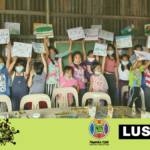The Rai, also known as Radu, Rodu, Rodung, Kirawa, or Khambu are an ethnolinguistic group who are indigenous to the area drained by the Sun Kosi River, west of the Arun River, at heights of 5,500–7,700 feet of Nepal as well as in southern Bhutan. According to the 2011 census, Nepal’s Rai population is 620,004, accounting for 2.3 percent of the country’s overall population. Kirati’s primary festival is Sakela celebrated twice a year as ubhauli on Baisakh’s full moon day and as udhauli on Mangsir full moon day in Kirati Rai villages. Mangsir full moon day in Kirati Rai villages. Since the Kirati people believe themselves to be naturalists, they celebrate sakela to honor the sky, earth, rivers, and forests on the one hand, and to pay tribute to family members who have died on the other. Sakenwa, Sakela, Tosh/Toshi, Bhume, Sakel, Wass, Segro, Sakewa, Dhuulu, Phagulak, Gelang, Gayapuja are some of the names used by the Rai people. Silli is the name given to the dance acting that takes place in sakela. Silli can vary from village to village in the beating of Jhyamta Cymbals and Dhol they play with sillis are mostly perform their daily activities that are similar to human activities similarly they imitate other activities like worshiping the tap and sun the sillis show how people began agriculture like digging tilling, weeding, and farming cotton Similarly, colorful imitations of birds and animals are performed.
The Ancestors such as “Tayama-Khiyama”, hunter, Chasum, Narawa,”Paruhang-Nayuma” silli are actively performed in the soulful silli. Even today, some 45 silli are said to exist. “Hetchhakuppa,” a Kirati ancestor, is thought to be the first silli performer. The main idea of Sakela is that worshiping nature is a basic necessity of human beings, and that paying tribute to ancestors is necessary because we would not exist without them.In Rai society, men and women have equal standing in the family and community, and there is essentially no gender discrimination. Although the father is normally the family’s leader, the woman’s role in domestic planning and decision-making is as vital. In the absence of his wife, the husband makes almost no decisions. After supper, they usually debate how to arrange their daily activities as a family, and a decision is made.A widow can wear her casual outfits after a year since her husband’s death. When it comes to attire, the widow or widower has no restrictions.

The Rai people’s primary occupation is farming. Maize, millet, wheat, and mustard were mostly grown in dry terraces, while rice was grown in wet areas. The grains farmed are primarily for their own everyday requirements, such as festival food and animal fodder. They also utilize it to produce spirits and beer, which they sell at the local market. Women raise buffalo, pigs, and chickens in practically every household, and they run small provision stores for extra money, primarily to sell homemade beer and alcohol. They used to weave their own garments out of Bhangra to wear in the past because their profession was hunting and they liked to use bow and arrows. Young women, particularly girls, are responsible for daily tasks such as cooking. They are more likely to gather firewood from the forests and transport water from communal water sources, whereas males are more likely to engage in agricultural pursuits. Kirati people use the land inherently under the Kipat system, which gives them communal rights over land that is tax-free and includes sovereignty over all agricultural areas, forests, streams, and rivers within its boundaries .However, it is the law that if other organizations utilize the Kipat, they must pay a tax to the landowner. People used to grow their own property but now, fields are rarely rented. Rai women used to weave home spent clothes from the Kadi, Cotton and Allo Nettle Plant.
Photo 1: Rai women weaving traditional Phenga(waist coat) of Allo Nettle fibre.

Rais also served in international military and civilian organizations such as the Indian Gorkha Regiment, the British Gurkha Regiment, and the Singapore Police Gurkha Contingent. Rai people are known for their unmistakable strength and courage, and almost every Rai hamlet has a few soldiers, police officers, or civil officials, as well as older pensioners. It is simple for them to join the army because of their bravery, fearlessness, honesty, and straightforward character.
Photo 2: Pabin Rai : The first female British army
According to the 2011 census, Nepal has 620,004 Rai, accounting for 2.3 percent of the country’s total population. The population of Rai is already declining, and the bulk of young people are traveling abroad to join militaries or pursue higher education and occupations, making it harder to maintain the culture’s significance and worth. Globalization’s cultural consequences also cut beyond racial and demographic lines. Cultural identities continue to take on new meanings as a result of globalization. We have global consumer behavior and patterns as a result of globalization, which has faded the actual soul of a culture’s identity. As a result, the latest technology and for the betterment of individual choices makes preserving culture harder. As a result, we can mitigate the situation to some extent through various uplifting policies and awareness programs.#

About the Author: Ms. Kiyumma Rai Butang hails from Dharan Province, Nepal and belongs to the indigenous Rai community who speaks out with own views and thoughts on contemporary issues. She aspires of a solid agriculture system in society while appreciating cultural values as a student of agriculture science.

